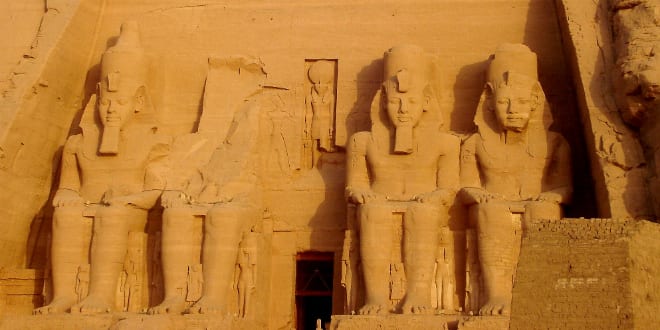Scientists using data collected from earlier CT scans of the mummified remains of Ramses II believe they have created an accurate image of the face of the Egyptian king who ruled at the time the Jews were led from slavery by Moses.
Using recently developed imaging software, researchers from England and Egypt produced 3D images of the skull and reproduced what they believe the Egyptian ruler looked like when he died over 3,200 years ago at the age of 96. Researchers then used the software to turn back the clock even further to produce an image of Ramses II at the age of 45.
“The software identifies the properties of the various layers of materials on the mummy’s face, such as overlying linen bandages, and allows for the digital unwrapping of the pharaohs,” Dr. Sahar Saleem, a professor of radiology at Cairo University who led the project, said in an interview with AuntMinnieEurope.com.
“Different populations and ethnicities have different average measurements in various regions of the face including the slant of the forehead, and the nasal, malar, and labial regions,” she said. “The most scientific approach is to use measurements from a population that is as close as possible to your subject — which is what we did.”
“The visualization of fine facial features such as ear piercings and hairstyle was also made possible by modern image reconstruction software,” Saleem said.
Ramses II was the third king of the 19th dynasty (1292–1190 BCE) of ancient Egypt whose reign (1279–13 BCE) was the second longest in Egyptian history. He lived to be ninety-six years old, had over 200 wives and concubines, ninety-six sons and sixty daughters, most of whom he outlived. He is often regarded as the greatest, most celebrated, and most powerful pharaoh of the New Kingdom, itself the most powerful period of Ancient Egypt. The 66-year reign of Ramses II marks the last peak of Egypt’s imperial power. On his death, he was buried in a tomb in the Valley of the Kings but his body was later moved to a royal cache where it was discovered in 1881.
Though there are no archeological records identifying the Pharaoh of the Exodus, Rames II is one of the more popular candidates. He is known for his extensive building programs and for the many colossal statues of him found all over Egypt, leading to associating him with the Biblical reference to the Hebrews constructing the supply city named Ramses (Exodus 1:11). No record of the exodus of the Jews has been found in any Egyptian tablets but a reference to “Israel” appears on the Victory Stela of Pharaoh Merneptah, one of Ramses’ sons.
An in-depth analysis of the identity of the Pharaoh of Exodus can be found on The Israel Bible website.
There are many ancient Egyptian records of Semitic immigrant workers who came to Egypt, but who may have returned to Syria-Canaan in the 13th century for a variety of reasons—including, perhaps, Ramses’ harsh policies of conscripting labor.
According to Caroline Wilkinson, director of the Face Lab at Liverpool John Moores University, the reconstruction process involved a “computer tomography (CT) model of the skull” and a “database of pre-modeled facial anatomy that we import and then alter to fit the skull.”
“We all have more or less the same muscles from the same origins with the same attachments,” she explained.
Saleem described the resulting image as a “handsome” pharaoh.
“I find the reconstructed face is a very handsome Egyptian person with facial features characteristic of Ramses II — the pronounced nose, and strong jaw,” Saleem said in a statement cited by the Daily Mail.
Saleem, who has CT scanned more than 40 royal mummies throughout her career, was part of a team that managed to scientifically reconstruct the face of Egyptian ruler Tutankhamun (1341-1323 BC).



